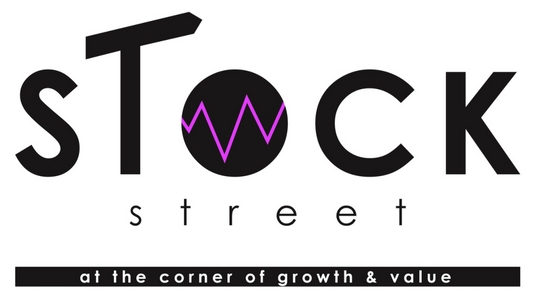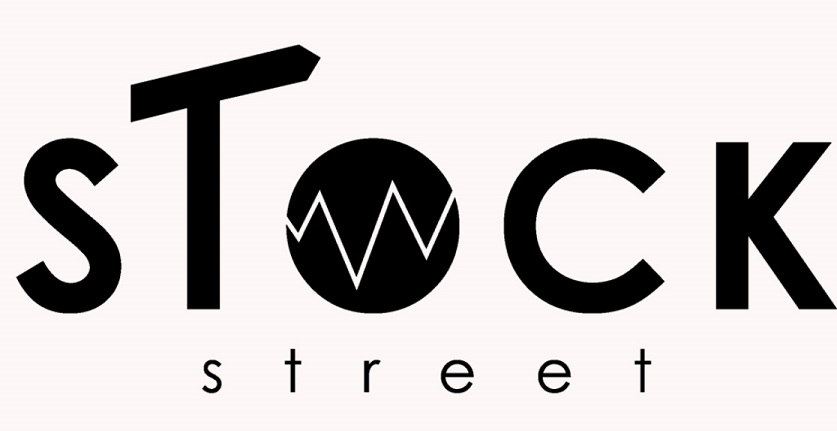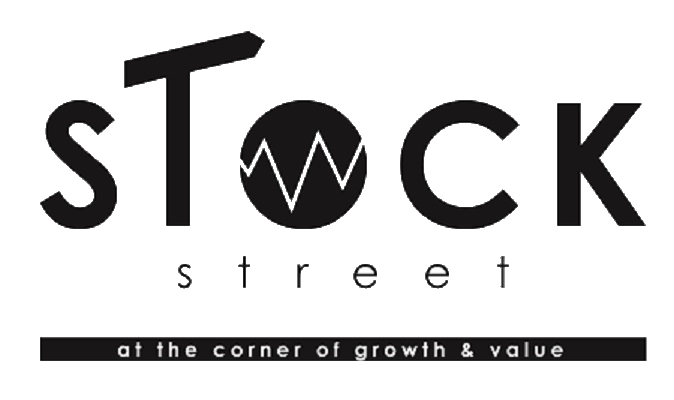Swell Investing Review
- Fees
- Investment Options
- Account Options
- Tools & Features
- Account Minimum
Good to know
Yes, Swell Investing has a bit of a higher management fee than most robo-advisors.
While this is true, Swell doesn’t charge ETF fees like other robo-advisors (because it doesn’t utilize ETFs).
In general, this review of Swell is positioning the company against all robo-advisors.
Swell Investing isn’t an all-in-one robo-advisor trying to help all investors – it is a niche specific investment platform just for people interested in impact investing.
If you are interested in impact investing, this company is a very strong option.
Don’t let the review score deter you from investing in Swell to gain exposure to impact investing – this is a comparative score of Swell based on many factors outside of impact investing.
Interested in impact investing with Swell? Click below:
–
Is it even possible to invest in companies that will benefit humanity?
It turns out….
It is possible.
With Swell Investing, it is possible to bet on the future of humanity through investments in areas such as clean water and renewable energy.
While investing in sustainable development is possible, it may come with some potential drawbacks.
What are those drawbacks and should you use swell to invest in sustainability?
Maybe.
Maybe not.
This comprehensive review of Swell Investing will help you decide if it’s right for you.
Swell Investing review
Swell Investing fees & features
SWELL INVESTING | |
|---|---|
| Rating | 3.8 |
| Management Fee | 0.75% |
| ETF Expense Ratios | NO |
| Account Minimum | $50 |
| Algorithm Based Portfolio | NO |
| Investment Options | |
| Account Options | |
| Technology | |
| Lending | NO |
| Socially Responsible Investing | |
| Promotions | NO |
| Swell Investing Email Support | support@swellinvesting.com |
| Swell Investing Phone Support | 949-566-8985 |
| Learn More! | CLICK TO BECOME AN IMPACT INVESTOR |
About Swell Investing fees & features
- Fees – 0.75%. This fee is high for robo-advisors. However, Swell isn’t exactly a robo-advisor. It is more of an online investment platform. Most robo-advisors leverage ETFs, and those ETFs themselves have fees.
- ETF fees – No ETF fees because Swell doesn’t use ETFs.
- Stocks – Unlike most robo-advisors who use ETFs with fees to build portfolios, Swell uses individual stock portfolios.
- Investment options – Investments including:
- Individual stock portfolios.
- Stock ETFs
- Bond ETFs
- Real Estate ETFs
- M1 Finance retirement options – Retirement accounts including:
- Traditional IRA
- Roth IRA
- SEP IRA
- Minimum investment – $50. A low minimum investment for a robo-advisor
- Helpful features – Support to help you rollover your 401k
Positives of Swell Investing
- Socially responsible investing – Of course this is the best part of Swell Investing. The ability to invest with a conscience is so important to many people. Swell brings multiple portfolios together filled with company stocks that you can feel happy to own. The type of investing Swell focuses on is impact investing, which falls under socially responsible investing (SRI).
- Account minimum – $50. With a $50 account minimum, Swell Investing is accessible to the masses. The most beneficial part of having such a low account minimum is the ability to test a platform before using it. Some robo-advisors have minimums as high as $10,000. If you want to test the platform before using it, you need to invest a sizeable amount. With Swell, you can test it with a small amount.
- Individual securities – You are an owner of the companies swell uses. Robo-advisors using ETFs don’t have this relationship. Being the owner of an actual company is a great thing. One of the problems with ETFs is the detachment from the actual stocks. Swell brings you closer to actually being an owner of a company, not just a passive detached investor.
- No ETF fee – As mentioned above, Swell doesn’t use ETFs. The vast majority of robo-advisors use ETFs and in doing so, you must pay the fees for those ETFs. This is one big positive of Swell Investing.
- Customization – If you don’t want a company in your thematic portfolio, you have the option of removing up to three companies from your portfolio.
- Hyper-specific themes – Many individuals wanting to practice impact investing will be happy with the six thematic portfolios. If you only want to invest in one portfolio or a few portfolios, you have the option.
Negatives of Swell Investing
- Management fee – With a management fee of 0.75%, Swell investing is on the high end compared to robo-advisors. Even with the lack of an underlying ETF fee, the 0.75% all in fee can be lower at other robo-advisors. For example, Wealthsimple will have a lower fee all in, and M1 Finance will have no fee at all.
- Lack of algorithm-based investing – Swell Investing puts the decision in your hands when it comes to your choice of allocations. Other robo-advisors use an algorithm based on questioning to invest your money for you so you don’t have to decide how much to add in which asset class. Some people are searching for this type of hands-off approach while some people don’t care about it.
- Tax-loss harvesting – Swell’s competitor, Wealthsimple, provides tax-loss harvesting functionality. This functionality can help reduce the taxes you will pay on any money invested in a taxable brokerage account. It would be nice if Swell had this option, but, unfortunately, it does not.
- Lack of options – Swell is not an all-in-one robo-advisor. If you are looking for a robo-advisor with access to a broad portfolio of stock and bond ETFs to create a highly diversified portfolio, Swell won’t be for you.
Swell Investing competitor analysis
Below is a comparison of Swell Investing vs. Wealthsimple and Swell Investing vs. M1 Finance.
SWELL INVESTING | WEALTHSIMPLE | M1 FINANCE | |
|---|---|---|---|
| Rating | 3.8 | 4 | 4.6 |
| Management Fee | 0.75% | 0.40% - 0.50% | 0% |
| ETF Expense Ratios | NO | ||
| Account Minimum | $50 | $0 | $100 |
| Algorithm Based Portfolio | NO | NO | |
| Investment Options | |||
| Account Options | |||
| Technology | |||
| Lending | NO | NO | |
| Socially Responsible Investing | |||
| Promotions | NO | Wealthsimple Black - VIP Airport Lounge Access; Complementary Portfolio Review | Refer a friend & both get $10. |
| Read My Detailed Review | WEALTHSIMPLE REVIEW | M1 FINANCE REVIEW | |
| Learn More! | CLICK TO BECOME AN IMPACT INVESTOR | INVEST WITH WEALTHSIMPLE | INVEST FOR FREE WITH M1 FINANCE |
How does Swell Investing work?
Swell is not exactly a robo-advisor per se.
A robo-advisor will often use an algorithm to invest your money.
Swell, on the other hand, has a portfolio management team that uses a rules-based investment approach to finding individual stocks.
Also, Swell is not the custodian of our money…
Your money is actually held at a custodian called, Folio Investments, Inc. Swell manages the money and makes the decisions, but the funds are held at Folio Investments, Inc.
The Swell investment process
Swell will research thousands of investment options through three filters:
- Top Down – They will look for world problems needed to be fixed and the companies spearheading those initiatives.
- Asses Impact – Thousands of companies will be filtered based on their impact. Swell will choose companies generating income from important impact themes.
- Bottom Up – The companies meeting the criteria for solving big problems and furthering positive impact will be analyzed from the bottom up. This will include valuing the company and its financial shape. You are investing in a company to make a profit – this is where the analysis comes in to find which companies may have the highest profit and investment potential.
Every company that makes it through these three filters needs to derive revenue from at least ONE of the United Nations sustainability goals.
What are the sustainability goals of the United Nations?
- No Poverty
- Zero Hunger
- Good Health and Well-being
- Quality Education
- Gender Equality
- Clean Water and Sanitization
- Affordable and Clean Energy
- Decent Work and Economic Growth
- Industry, Innovation and Infrastructure
- Reduced Inequalities
- Sustainable Cities and Communities
- Responsible Consumption and Production
- Climate Action
- Life Below Water
- Life on Land
- Peace, Justice, and Strong Institutions
- Partnerships for the Goals
Swell Investing Portfolio Options
There are six thematic portfolios available with Swell Investing. Each of the portfolios is managed based on the specific impact theme:
Returns of Swell’s portfolios
Your money is held with a custodian, Folio Investment, Inc.
While your money is held at the custodian, Swell buys and sells stocks inside the six portfolios. You have the option of investing in any of the portfolios.
Also, if you find companies inside the portfolios you do not want, you have the option of removing up to three companies from your portfolio.
Below are the returns of the six portfolios as of when this is written.
- The clean water portfolio beat the S&P 500 with a 35.53% return versus a 32.14% return since inception (as of when this is written).
- The disease eradication portfolio lagged the S&P 500 with a 27.21% return versus a 32.14% return since inception (as of when this is written).
- The green tech portfolio beat the S&P 500 with a 41.98% return versus a 32.14% return since inception (as of when this is written).
- The healthy living portfolio beat the S&P 500 with a 41.75% return versus a 32.14%return since inception (as of when this is written).
- The renewable energy portfolio lagged the S&P 500 with a 24.06% return versus a 32.14% return since inception (as of when this is written).
- The disease eradication portfolio lagged the S&P 500 with a 30.07% return versus a 32.14% return since inception (as of when this is written).
As of when this is written, three of the portfolios are beating the S&P 500 and three of the portfolios are lagging the S&P 500.
Having 50% of portfolios beating the S&P 500 is actually much better than the average, which is respectable.
How does Swell Investing compete?
Before analyzing Swell’s competitors, it is important to note how Swell positions itself.
According to Swell, they do a much deeper analysis of the companies based on their ability to make an impact. They believe their approach goes much further than both environment, social & governance (ESG) investing, as well as socially responsible investing (SRI).
Below is a comparison chart Swell uses to position itself against ESG and SRI investing.
The following two competitors both offer an option for socially responsible investing (SRI).
While they both offer portfolios for this purpose, Swell Investing likely has a more deep analysis when it comes to investing in the most impactful companies.
That being said, if you are only searching for SRI based investing and the depth doesn’t matter to you, these two competitors have SRI options.
Swell Investing review conclusion
Should you invest with Swell?
Yes…
If you care about investing your money in sustainable, socially conscious companies making an impact.
No…
If you want to just invest and pay the least amount of fees & you don’t care about sustainable investing.
Maybe…
If you want to invest a portion of your money with Swell. You may want to just invest a percentage of your money with Swell and utilize its hyper-specific portfolios.
Best for a portion of your money?
Investing with Swell may be best for a portion of your money, not all of your money.
This is because Swell is not an all-in-one robo-advisor.
What do I mean by all-in-one roboadvisor?
An all-in-one robo-advisor would have features to create a portfolio for anyone.
If you want both stocks and bonds (or stock ETFs and bond ETFs) you can create a properly diversified portfolio with many different equity and fixed income style options.
Swell doesn’t have these features.
However…
What Swell does have, is a very niche specific investment platform.
Because they have a “niche” type platform, they may be perfect for a portion of money but not all of your money.
Impact investing is respectable
For those of you who will invest with Swell Investing…
I have tremendous respect for you.
Investing with a conscience is important for many people.
This company can help you feel proud about investing; to feel hope in the efforts being done to better the world.
While Swell Investing (or its competitors) can help you bet on an optimistic future, remember there is a bit more risk in the form of portfolio loss potential and volatility…
Whatever you choose, feel confident in your decision to invest with a conscience – it is a very respectable quality.
CLICK TO BECOME AN IMPACT INVESTOR
Disclaimer: These are the ideas and opinions of the author. The author is not responsible for the actions of those who read the posts on this blog. Each individual reader has a unique situation and unique needs. This blog is not intended to solve those unique situations of the readers. This blog is not liable for decisions made by the readers of this blog.
You know how websites add a section at the bottom that says, “This post MAY contain affiliate links”? Well, I am not going to be vague like those websites. We all know if they write that sentence, the post includes affiliate links. So, I will tell you straight up that this post DOES include affiliate links. Use them, I will make a little dough (at no extra cost to you). Here is my affiliate link disclaimer if you want to read more: DISCLAIMER




























Their “categories” are very loose definitions…lol. A quick look through the holdings shows some interesting stuff…
Green Tech = Electronics(?)/Semiconductors/Batteries(not sure how battery manufacturing/disposal is green but oh well….)
Clean Water = Chemical companies/Construction companies
Zero waste = waste disposal/steel manufacturers(?)
Renewable energy = actually pretty much renewable energy companies! yay!
Disease Eradication= Big pharma stocks (sigh)
Healthy living = chemical companies(?)/cleaning product companies(?)/sportswear/medical device manufactures
All in all great write up and detailed review!
Thanks, Mike!
They may be a bit loose just by the fact they need to hit only one minimum UN sustainability goal. I like that you can click each portfolio holding and they give you an explanation why it is in the portfolio and what sustainability goal it hits.
But ya maybe a little more loose.
Thanks for the comment!